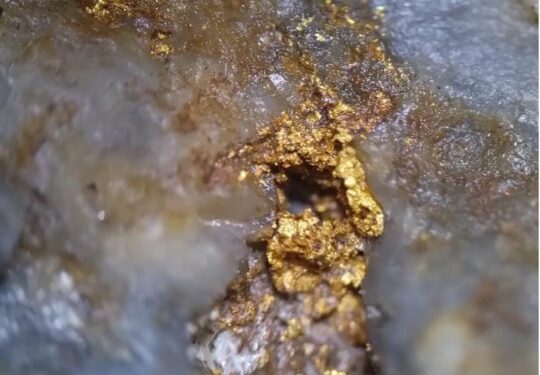Siren Gold Limited (ASX: SNG) has identified further significant potential at its Lyell Prospect in New Zealand.
Highlights
• The Mt Lyell North 1km long Au Zone has been identified as a significant new discovery.
• The United Victory Reef with significant visible gold was discovered at the NW end of the Au anomaly.
• The reef is surrounded by disseminated acicular arsenopyrite for a total thickness of approximately 2.0m-3.0m along a one km gold zone.
• A United Victory Reef channel sample returned 3.0m @19.1g/t Au, comprising a 0.4m quartz reef with visible gold that assayed 39.0g/t Au, surrounded by disseminated arsenopyrite mineralization assaying up to 42.0g/t Au.
• A float sample of the United Victory Reef with significant visible gold assayed 205g/t Au.
• An acicular arsenopyrite mineralized outcrop was also found 30m to the south of the reef, with a grab sample returning 6.4g/t Au.
• A float sample of sulphide rich sandstone, a further 50m upstream from the reef outcrop, returned 12.7g/t Au and 0.24% Sb.
• These samples extend the mineralized zone to around 100m along strike and it is open to the north and south.
“These high-grade gold results confirm the prospectivity of the Lyell Goldfield. Lyell is located 40km north from Reefton at the northern end of Siren Gold’s tenements that span 35km along a mineralized structural trend,” Managing Director, Brian Rodan, said.
“That Siren has confirmed high grade gold within every prospect along this trend underpins our confidence of delivering a multi-million-ounce high grade gold project at Reefton.”
The Lyell Goldfield is located 40km north of Reefton, where gold bearing quartz lodes were historically worked over a continuous strike length of 5km. The Lyell Goldfield is the northern extension of the Reefton Goldfield that produced 2Moz of gold at an average recovered grade of 16g/t. The project overlays the historic Alpine United mine, which produced ~80koz of gold at an average recovered grade of ~17g/t between 1874 and closing in 1912.
Several other small mines, such as the Break of Day, Tyrconnell and United Italy, also operated historically north of the Alpine United mine. These are reported to have worked high grade quartz leaders up to about 10cm in width but they only produced only small tonnages.
Three historical quartz reef mines, Titchborne, Victor Emanual and the United Victory, were located further north. Not much is known about the Titchborne and Victor Emanual, although excerpts from historical newspapers indicate they worked quartz reefs around 1880, with mines serviced by the Titchborne stamper battery. The United Victory Mine was worked over at least two levels.
Soil sampling has confirmed a NNW trending four km long anomalous gold zone between the Alpine United and United Victory mines. The Break of Day mine is also located along this anomaly. The soil samples have identified several anomalous areas which may represent mineralized shoots similar to those seen at Alexander River. The Alpine United mine shoot plunged ~45 degrees to the north and was mined down to 500m below the surface and 750m down plunge and is open at depth. A total of 80koz @17g/t Au was recovered from the mine.
For further information please visit: https://sirengold.com.au/












